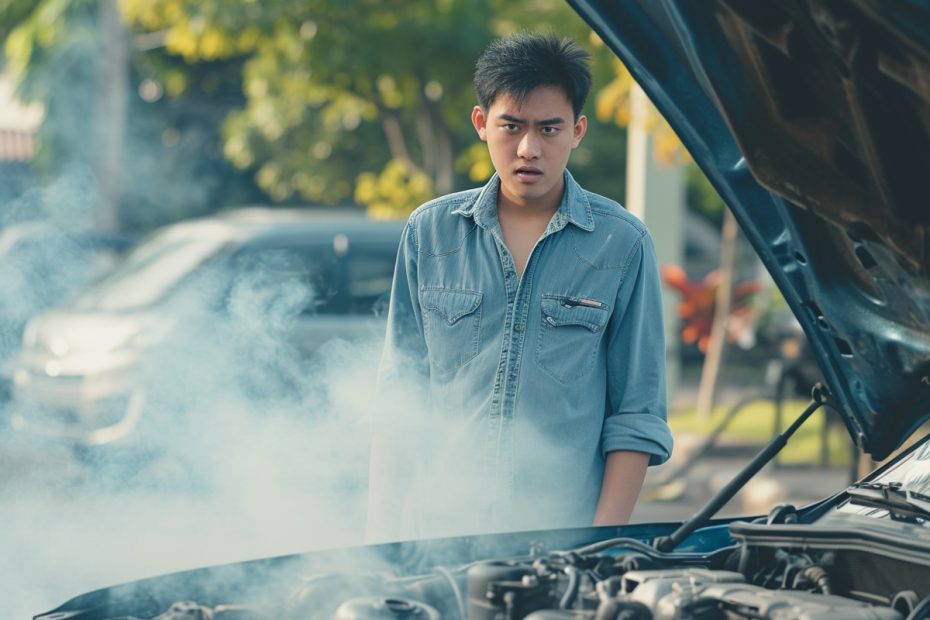Experiencing your car’s temperature gauge creeping into the red zone can be more than just a minor inconvenience‚Äîit’s often a sign of trouble under the hood. I’ve been there, watching steam billow from beneath my car’s bonnet, and trust me, it’s not a situation you want to find yourself in.
Understanding why cars overheat is crucial to maintaining your vehicle’s health and avoiding the stress of unexpected breakdowns. I’ll walk you through the common culprits and provide insight into the troubleshooting process. Stay cool and read on to get a handle on your overheating engine before it gets the best of you.
Common Causes of Car Overheating
Understanding why a car overheats requires a bit of detective work. As a seasoned car enthusiast, I’ve come across various scenarios that can lead to a car heating up more than it should. Let’s delve into some of the most common causes that you should keep an eye out for.

Low Coolant Levels
The first thing I always check when a car is running hot is the coolant level. Coolant is essential in absorbing engine heat and dissipating it through the radiator. Low levels might mean there’s a leak or the coolant hasn’t been topped up according to the maintenance schedule. It’s critical to ensure the cooling system is never depleted to prevent severe engine damage.
Faulty Thermostat
A thermostat acts like a gatekeeper, regulating the flow of coolant to the engine. If it’s not working correctly, it can stay closed, trapping heat inside the engine and leading me to a classic overheating situation. Replacing a malfunctioning thermostat is generally a straightforward task for most mechanics or adept DIYers.
Malfunctioning Water Pump
The water pump circulates coolant throughout the engine and cooling system. If it’s broken or failing, the coolant won’t move as it should, causing the engine to overheat. I’ve found that a water pump’s condition can be a tell-tale sign of impending trouble, and it’s important to get it inspected regularly, especially on higher mileage vehicles.
Radiator Issues
Radiators can clog, leak, or the fans might fail, all leading to overheating. I’ve personally seen cases where debris has blocked airflow, making it difficult for the radiator to lower the coolant temperature. Ensuring the radiator is in good condition and free of obstructions is vital for any car’s health.
Belts and Hoses
Worn out belts and hoses can be culprits too. Cracks or splits in hoses can lead to coolant leaks, and a snapped belt may mean the water pump isn’t being driven, leading to a quick rise in engine temperature. Regular inspections can save a lot of trouble here.
Spotting any of these issues early can save time, money, and the stress of being stranded due to an overheating car. Regular maintenance and awareness are your best defenses against these common engine overheating issues.
Checking the Coolant Level
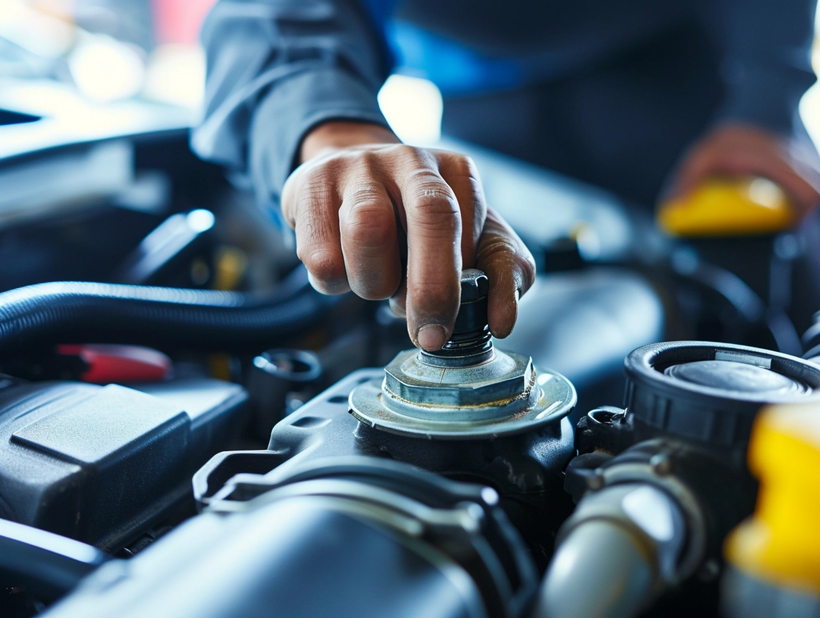
When I’m faced with an overheating engine, the first thing I check is the coolant level. It’s a simple yet crucial step. Coolant, or antifreeze, is the lifeblood of your car’s cooling system, and low levels can spell disaster for your engine. To begin this process, I ensure the engine is cool before I pop the hood. It’s important to never check the coolant level when the engine is hot to avoid scalding injuries.
Once safe, I locate the coolant reservoir, which is typically a translucent plastic container near the radiator. On its side, there are markings that indicate the optimum level – ‘Full’ and ‘Low’, or sometimes ‘Max’ and ‘Min’. At this point, a visual inspection will tell me if the coolant is below the ‘Low’ or ‘Min’ mark.
If the level is indeed low, I’ll top it off to the correct level with the appropriate type of coolant. It’s vital to use the correct solution as specified by the car manufacturer because mixing different types of coolant can lead to chemical reactions that may damage the engine. After filling, I securely fasten the cap back onto the reservoir to prevent any leakage or contamination.
Remember, simply topping off the coolant isn’t always the end of the story. If the coolant level was low, I’d ask myself why. There’s a possibility that a leak or another underlying issue is leading to the depletion of the coolant. So I make a mental note to monitor the coolant level frequently over the next few days and plan to investigate any potential leaks or schedule an appointment with a trusted mechanic if the level drops again. Keeping an eye on these details can avert more serious problems down the road.
Inspecting the Radiator
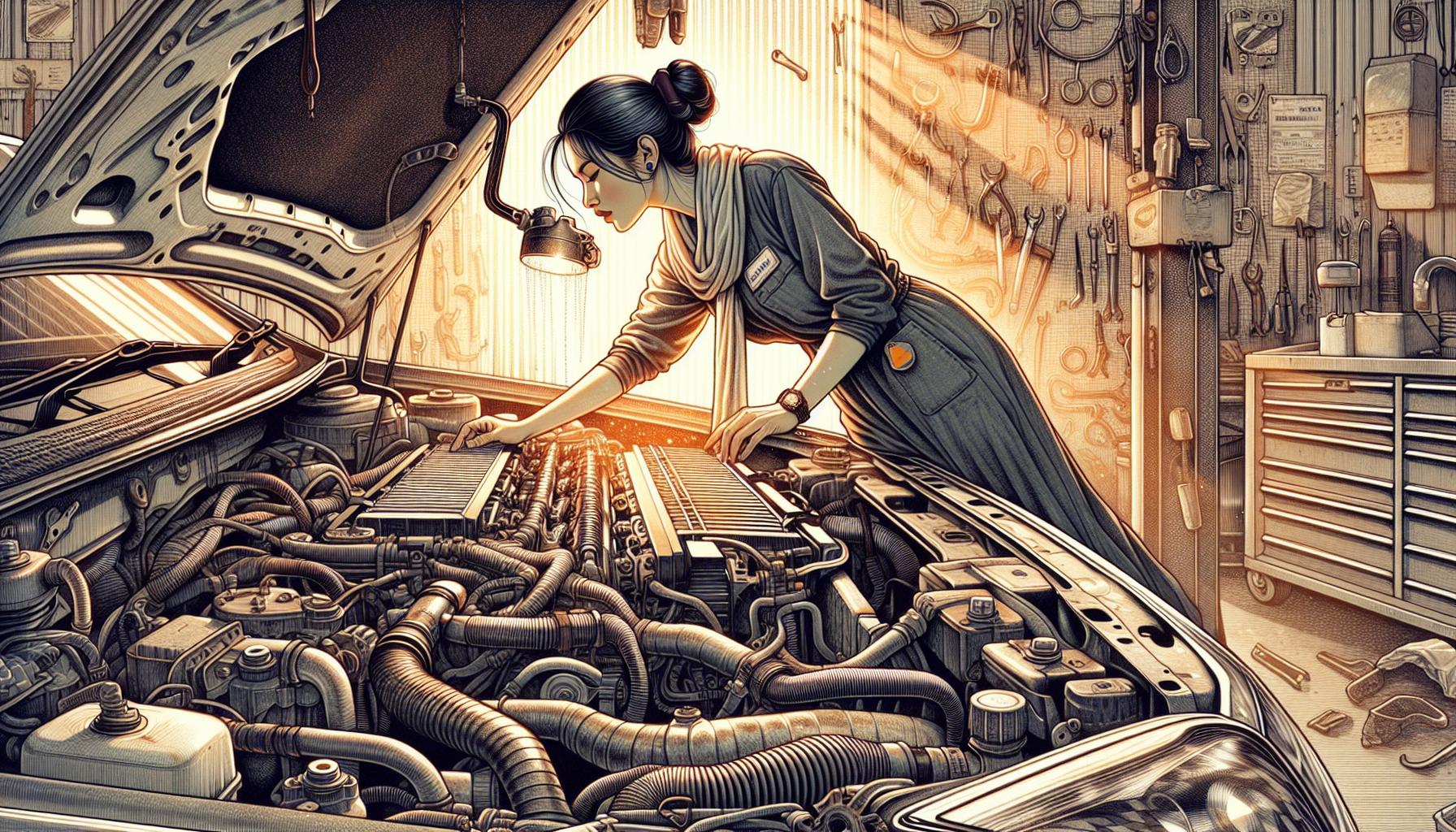
When dealing with an overheating car, one of the first places I check is the radiator. The radiator‚Äôs role is critical: it’s designed to dissipate the heat that coolant absorbs as it circulates through the engine. A properly functioning radiator is essential to manage the engine’s temperature and prevent overheating.
I start by assessing the radiator for any visible signs of damage or blockages. Debris like leaves or insect nests can obstruct airflow, reducing the radiator’s efficiency. It’s also important to look for corrosion or rust, which could indicate a leakage or a weakened structure susceptible to breaking down.
Then, I ensure that the radiator cap is secure and intact. An improper seal on the cap can cause the system to lose pressure, leading to increased engine temperatures. But remember, never open a radiator cap when the engine is hot; the pressurized system could release scalding fluid and steam.
Keeping an eye on the radiator hoses is also a significant aspect of my inspection process. These hoses can deteriorate over time, leading to leaks or blockages. I look for bulges, cracks, or soft spots that are tell-tale signs of imminent hose failure. Timely replacement can preempt a roadside overheating incident.
An often-overlooked component is the radiator fan. If the fan isn‚Äôt engaging, the radiator can’t effectively cool the engine at idle or low speeds. I listen for the fan‚Äôs operation, especially when the engine reaches operating temperature. If there’s no sound or movement from the fan, it might be time to investigate the fan’s motor or the controlling relay and temperature switch.
Lastly, I check the condition of the coolant again after the engine has cooled. A brownish color or the presence of particles can suggest rust and sediment build-up in the radiator, which calls for a system flush and the replacement of the coolant with the appropriate mixture recommended by the vehicle manufacturer. Regular maintenance of the radiator and its components can certainly extend the life of a car’s cooling system and reduce the chances of overheating.
Testing the Thermostat
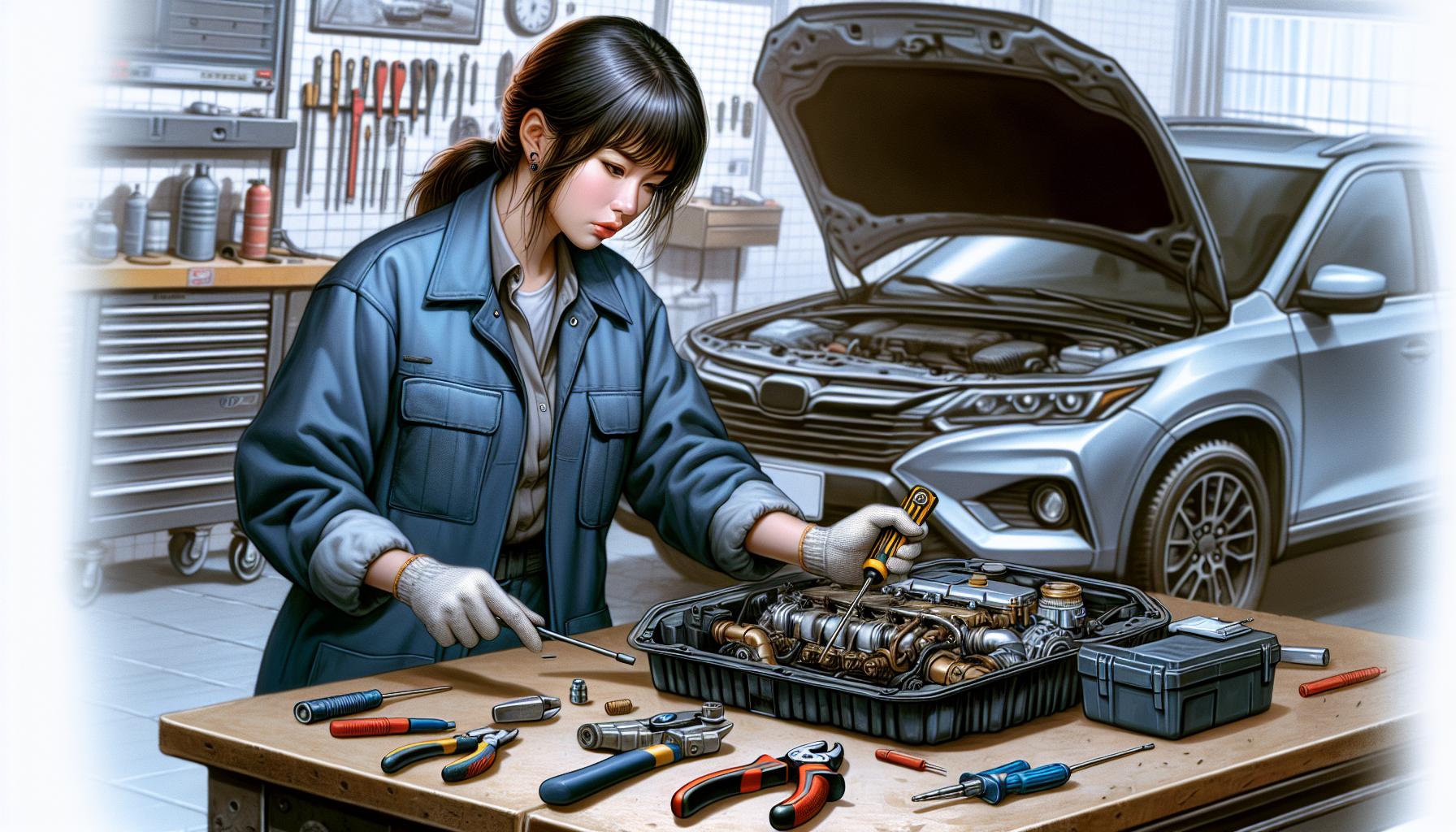
When troubleshooting an overheating engine, I can’t overlook the thermostat. It’s a crucial component regulating the engine’s temperature by controlling the flow of coolant to the radiator. A malfunctioning thermostat might not open properly, leading to engine overheating. Here’s how I test it.
First, I ensure the engine is completely cool. Opening the radiator cap on a hot engine isn’t just dangerous; it can lead to serious burn injuries. After verifying the engine temperature, I locate the thermostat housing. This is typically found by following the upper radiator hose towards the engine block.
With the thermostat located, I’ll start the engine and let it idle. As it warms up, I carefully touch the radiator hose. It should start cold and gradually warm up. If the hose warms up immediately or not at all, there could be an issue with the thermostat. In some cases, I use an infrared thermometer for a more accurate reading. The temperature should rise steadily and should not exceed 200 degrees Fahrenheit if the thermostat is functioning correctly.
Let’s say the hose doesn’t heat up as expected or overheats. That’s a sure sign the thermostat may be stuck closed. On the other hand, if the hose heats up but the engine temperature gauge remains low, the thermostat could be stuck open. Either condition hinders proper coolant circulation and thus, efficient engine cooling.
The next step I take is to remove the thermostat and inspect it. I look for corrosion or build-up that might prevent it from opening or closing properly. If in doubt, I’ll perform a simple test by placing the thermostat in a pot of water and heating it to the opening temperature – most thermostats open between 180-195 degrees Fahrenheit. I observe to see if it opens; if it doesn’t, it’s time for a replacement.
I always remind my readers that handling car maintenance can be complex and seeking professional assistance is a smart choice when in doubt. Regular maintenance is key to vehicle longevity and performance, and the thermostat, being as crucial as it is, should never be overlooked.
Checking for Cooling System Leaks
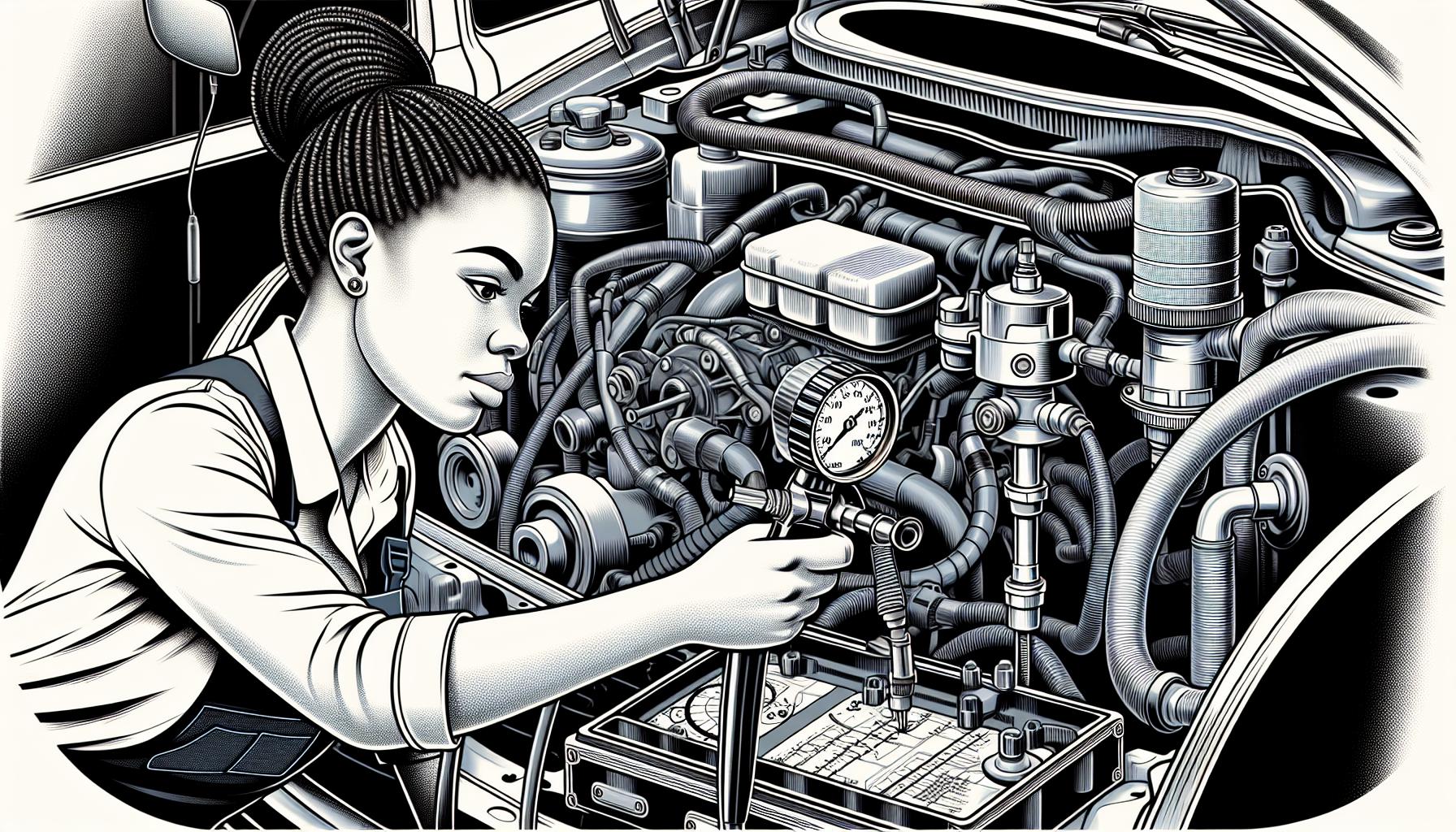
When my car starts to overheat, one of the first things I consider is the possibility of a leak in the cooling system. A car’s cooling system is intricate, and even a minor leak can lead to significant problems. I start by visually inspecting all components, including the hoses, the radiator, and the water pump for signs of coolant seepage or accumulation.
To accurately detect leaks, I sometimes use a pressure tester on the system. This tool pressurizes the system without the engine running, which makes leaks easier to identify. If I spot a trace of coolant on the ground where my car is parked, this is a tell-tale sign that there’s a leak somewhere.
Once I’ve identified a possible leak, I‚Äôll focus on the following areas:
- Radiator: Check for corrosion, punctures, or damage.
- Hoses: Look for cracks, hardening, or blistering.
- Water pump: Watch out for weep holes leakage, it’s a common failure point.
- Heater core: Leakage here might cause a coolant odor inside the car.
Small leaks can sometimes be remedied with sealant products, but I know this is usually a temporary fix. For any significant or persistent leaking, I’ll consult a mechanic who will usually advise replacing the faulty component.
Another element I pay attention to is the coolant reservoir tank. Cracks or damage to the tank can also lead to leaks. Since it’s made of plastic, it can succumb to damage from engine heat over time. If the tank shows any sign of cracking or wear, I consider replacing it to prevent future overheating issues.
It’s important to remember that leaks can cause air pockets in the cooling system, which prevents proper circulation and contributes to overheating. That‚Äôs why I‚Äôm always meticulous during inspections, especially after noticing symptoms of an overheating engine.
Should I find evidence of a leak but can’t pinpoint the source, I never hesitate to get help. A professional mechanic can perform a dye test, injecting a colored dye into the coolant which will leak out with it, making the leak’s location more visible under ultraviolet light. This method ensures that even the most elusive leaks are found and appropriately addressed.
Conclusion
Tackling an overheating engine can be daunting but staying proactive is key. I’ve outlined steps to identify common culprits like coolant levels and radiator issues. Remember, even small leaks can escalate quickly so it’s crucial to inspect your cooling system regularly. If you’re facing persistent problems or can’t pinpoint a leak, don’t hesitate to seek professional help. They’re equipped to handle complex issues and can ensure your car runs smoothly. Stay vigilant and your engine will thank you with performance and longevity.
